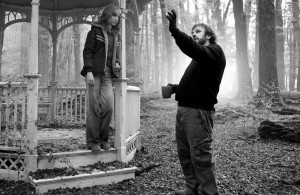
Hollywood director Peter Jackson has a lot of big-name films under his belt. His latest film is no exception. An adaption of Alice Sebold’s best selling novel,The Lovely Bones recently made it to the silver screen. It opened this January and has since been nominated for an Oscar.
The story centers around the murder and disappearance of a young girl who watches over her family and killer from heaven. She [Susie Salmon] tells the story from heaven, chronicling the lives of the people she left behind as they cope with her death and try to find her murderer. Starring Saoirse Ronan as Susie Salmon, Mark Walhberg as her father and Rachel Weisz as her mother, this film stays true to much of the novel, a difficult task for filmmakers.
“When you adapt a book, you can only really put half the book … into the film. So, you know, an average-length book, like The Lovely Bones, it would be a four- or five-hour-long movie if we were to include all of the characters that Alice wrote about, and all the subplots that she wrote about. You’ve got to realize that you’re only going to get half the book into the movie, and you’ve got to start making decisions about what the most important aspects of the book are,” Director Peter Jackson said.
The Lovely Bones is not Jackson’s first adaptation from novel to film. The Lord of the Rings trilogy and the recently announced Hobbit films are also book adaptations.
“It doesn’t take much for me to get excited about the little movie that’s being inspired by the words in the book. [I] want to think seriously about the idea of putting that little movie in my head onto film and showing it to other people, which is ultimately what we end up doing,” Jackson said.
While it is important in any adaptation is to stay true to the book, directors strive to separate the book from the film as a distinct piece. A soundtrack is a key tool used in this process. “The actual film [The Lovely Bones] is [set] in 1973. So, that dictated a lot of our music choices. We wanted the music track to reflect the time in which the film was made. So we used a lot of music that was … around in the early ‘70s. And there was some great stuff,” Jackson said.
Along with the soundtrack, musician/composer Brian Eno worked on the original score for the film.
Sound effects also played an important role in The Lovely Bones. “We used sound design a lot when we are in the afterlife with Susie. That we just have the atmospheres that are playing in the background of this world that she’s in—are different sort of atmosphere sounds [than] we have here. You know, in our real world,” Jackson said.
The Lovely Bones has been nominated for an Oscar, Golden Globe and a Screen Actor’s Guild Award. The film is currently showing in Mankato.
This is one of the best movie that I consider. It determines the good sides that will make a story have a twist. From this film we can see how the story of the book really gives good impacts to the readers as well as the movie to the viewers.
This is one of the stories I love..Thanks for the post!
Tungsten Wedding Bands For Men
Tungsten Wedding Bands
Buy Tungsten Wedding Bands Online
What a wonderful movie, i prefer the book, but definitely worth watching.